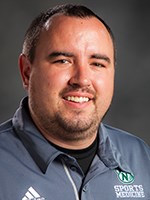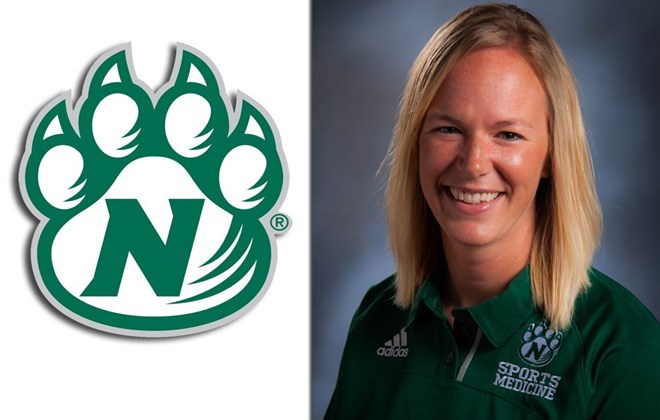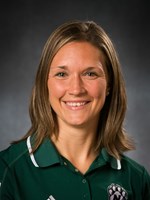
Article reposted from Hillsboro Star Journal
Author: DAVID COLBURN
Athletic trainer and 2004 Goessel High School graduate Nick Peters was perhaps on the verge of something big as he was beginning a second year of working with the NFL’s Denver Broncos.
Having completed a college internship with the Tennessee Titans and with two years of advanced internship experience with the Broncos, Peters might well have gone on to a career in the pros.
But fate intervened in the form of a former colleague at his graduate school alma mater, Northwest Missouri State University in Maryville.
“I always knew if something came up I would look at Northwest,” Peters said. “I already had returned to Denver for my second year, and then a position came open in June of 2012. The head athletic trainer, Kelly Quinlin, called and said, “What do you think about coming back and doing men’s basketball?’”
Peters had developed close relationships with Northwest athletics staff during a graduate assistantship there, and it was a full-time job with benefits.
With the Broncos’ blessing, Peters left one of the NFL’s most successful franchises and the nation’s 19th largest metropolitan area for the Bearcats and Maryville, population 11,800.
“This is a pretty small town; it’s half the size of Newton,” Peters said. “It’s driven by farmers, industry, and the university. There’s no other place in NCAA Division II that compares to it.”
What didn’t change was being immersed in an athletic culture dedicated to winning. Northwest has won six Division II football championships, and Peters was on the bench in March when the men’s basketball team won its first national championship.
“My focus for the final game was to make sure that each player stayed hydrated,” Peters said. “I got to climb the step ladder and snip my piece of nylon. But the head coach always gets to cut the last loop so he can hoist the net for the media.”
The biggest change for Peters at Northwest was having the responsibility to make decisions on an individual athlete’s status.
“I was making the calls,” he said. “I was decidinig if people would practice or sit or have to go see a doctor. That’s the hard part, making decisions that could affect the team when they weren’t expecting it.”
Young players who have been reluctant to sit out have come around when trade-offs have been explained.
“A lot of times it’s sitting an athlete down and saying, ‘You can be at 70 percent for the next two weeks, and the coach will be upset, or we can rest you for five days,’” Peters said.
There are numerous aspects about Northwest’s athletic culture that are relevant for high school and junior high athletes looking ahead to the opening day of practice and competition, Peters said.
“It’s kind of become the motto that ‘culture wins,’” he said. “They recruit players who want to win, not players who want to score 40 points a game. If they’re not going to play as a team, they’re not going to play here. There’s no ego; there’s none of that. It makes it a lot more fun to be around.”
Students considering playing in college should watch how they use social media, as recruiters will look for clues as to how players might fit with the culture.
“When you have social media, if you put it out there, they’re going to find it,” Peters said.
Athletes benefit from playing more than one sport, Peters said.
“On our football team, almost 90 percent of them played more than one sport in high school,” Peters said. “The more things you do, the better your body becomes at adapting to different situations.”
Staying hydrated is particularly important in warm weather and during increased activity, Peters said.
“Water is plenty good,” he said. “Any kind of electrolyte replacement isn’t bad, especially after practice or games. Before and during, water will do the trick. Some people sweat more than others, so electrolytes might be helpful for them.”
Bearcats players forego traditional stretching routines in favor of more active warm-up routines.
“They do more of a dynamic workout, so it’s not a static stretch,” Peters said. “They’re moving through lines, they’re going short distances to get the body temperature up, get the blood moving. Some people may need a little extra with hamstrings or lower backs.”
Students with pre-existing injuries should work closely with coaches, trainers, and medical professionals to develop routines that acclimatize them to their sport.
Weightlifting and conditioning routines will help to prevent fatigue and keep players healthy.
“The more fatigued you get, the higher chance you have of getting hurt,” Peters said. “Muscular injuries happen more at the end of games.”
While coaches and trainers can help, it’s important for athletes to pay attention to any signs of fatigue, injury, or illness and take steps to remain healthy, Peters said.
“Nobody knows their bodies as well as they do,” he said. “Don’t try to cut corners on that. You only get one opportunity with your body, and taking care of it now is a lot easier than taking care of it later.”

